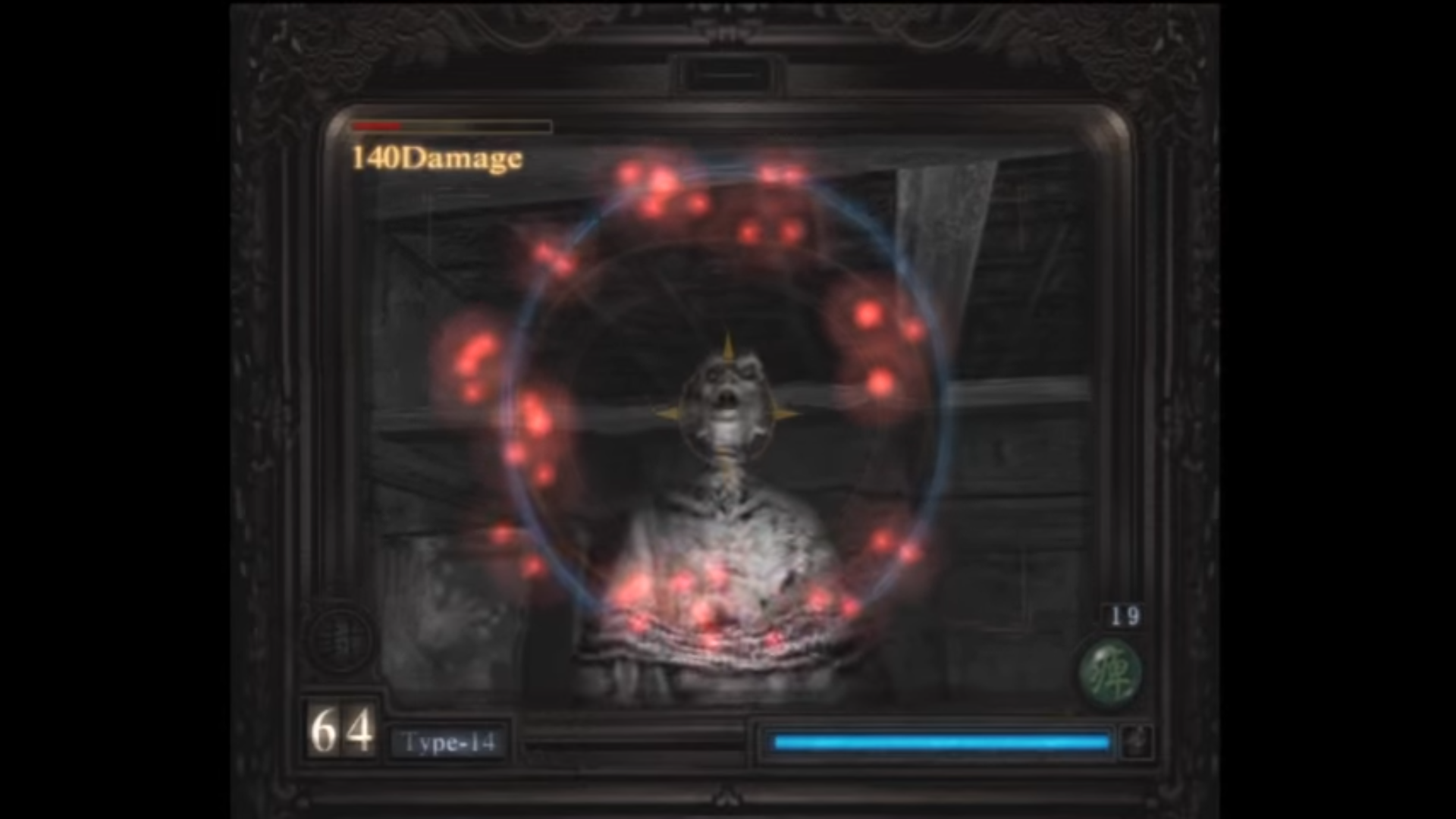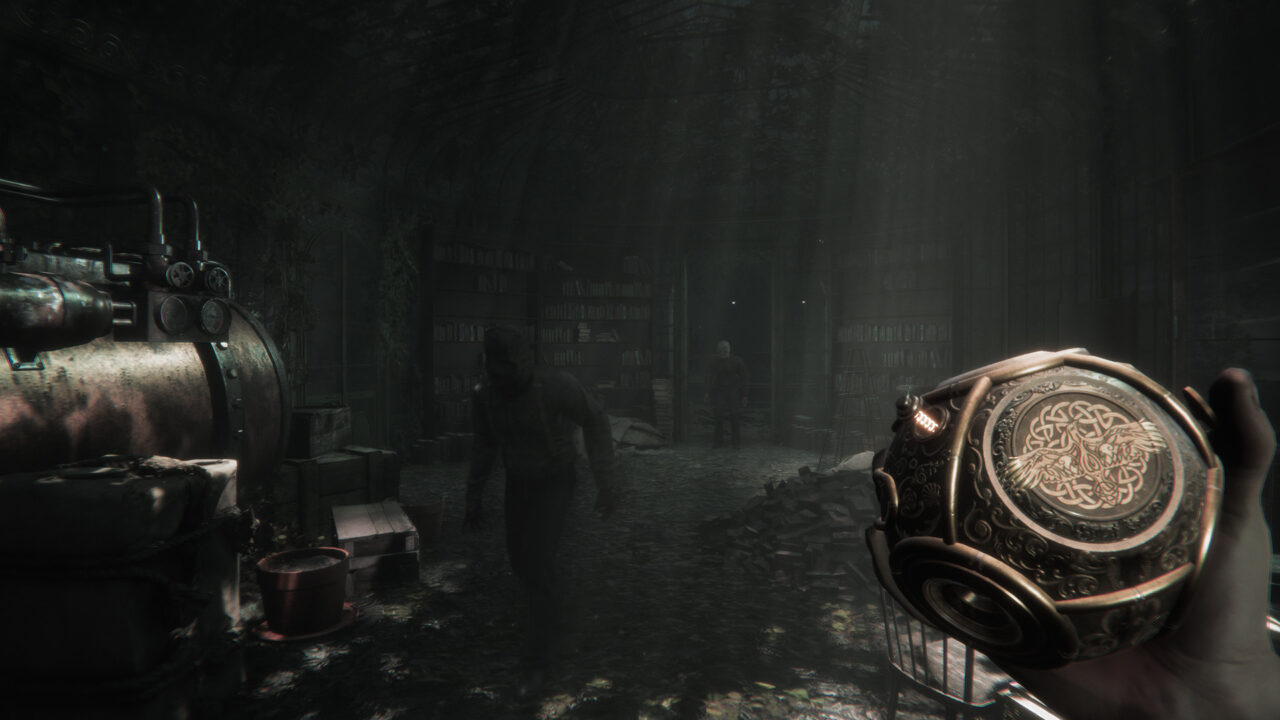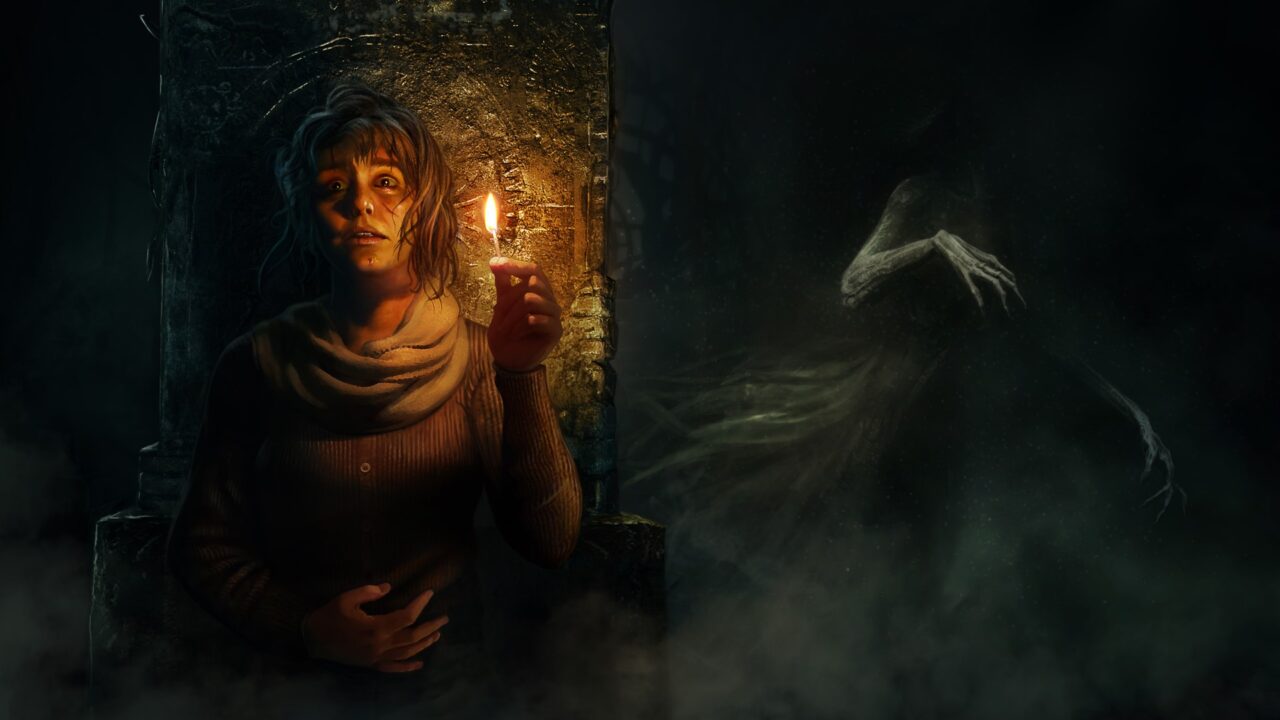We Need to Bring Back Combat in Horror Games

Games are a trend-driven form of media, and horror games are no exception. For a long while now there’s been a very specific type of horror adventure that’s predominated in the market. Stop me if you know the sort. It’s the first-person game where gameplay revolves around collecting notes, finding keys, and solving the occasional puzzle. The player character comes equipped with a torch, candle, phone, or other light-emitting device, and not much else besides, so that if there’s a monster the player’s choice will come down to a) run, b) hide, or c) die. Whilst this sort of game is entertaining so far as it goes, the time is now ripe for the horror genre to take its next evolutionary step.
Let me back up here a moment. When Amnesia: The Dark Descent first popularised this type of horror game in 2010 it was an innovative move. Not only did the game’s absence of combat disempower the player, but it also did so in a way that didn’t have to artificially rely on clunky mechanics like tank controls and fixed camera perspectives to do so. But that was a decade ago now. Sure, there have been some great titles in the same vein since them – Amnesia’s sequel A Machine for Pigs, for one thing, not to mention P.T. and the now-finally available Devotion – all three of which I’d personally rate among the greatest horror games of all time. But the countless also-rans this type of game has spawned, almost to the exclusion of all else, means the formula has gotten real old, real fast.
There’s a reason why the phrase ‘familiarity breeds contempt’ exists. It’s the same reason why Resident Evil 4 and 7 are often lauded as the best in the series. Both games came out at a point when the series had become overly reliant on formulas, and both weren’t afraid to change what needed changing. This same treatment is long overdue for the horror genre at large, and the ubiquitous note-hunting, instakilling, hidey-chasey horror titles in particular. The pattern is getting too predictable, and at its worst has spawned games that lack any substantive gameplay beyond ‘walk here and find the thing’.

Bring Back Boomsticks
If the article’s title didn’t give it away, the big thing that needs to be changed with all this is combat. Specifically; we need games that have some. The big caveat I’ll flag up here is zombie games. Sure, these games have combat, and if hidey-chasey, note-collectey games make up half the horror genre’s output, then zombie games must surely account for the other 50%. Saying I want more horror games with combat is not saying I want more zombie games. In fact, I’d be the first to loudly shout that we really, really don’t need more zombie games at this point. Instead, horror games need to find a way of integrating combat back into their gameplay without either sacrificing scares or relying on the tired cliché of mowing down hordes of the undead.
Is such a thing possible? I think it absolutely is, and I reject the argument that there’s some fundamentally unbridgeable gulf between engaging combat and genuinely unnerving horror. There are those who would argue that being able to defeat an enemy is an inherently empowering action, whilst disempowerment is a key element of fear. But this is merely a tension, rather than a fundamental contradiction, of game design principles. Taking combat out of a game only sidesteps the issue; what we need is more games that tackle it head-on. We already have some great examples in this regard, such as Condemned‘s visceral melee fights and the intense camera combat of the Fatal Frame series.
Moreover, horror is a genre uniquely suited to having combat as a core gameplay mechanic. In most other games, violence is primarily used as a sort of intuitive, tactile puzzle. Whilst well-designed horror games do this as well, at their best, they also use violence as a vehicle for fear, evoking a feeling of frantic tension that keeps players on edge.

Nefarious Designs
This isn’t to ignore the practical problems. Horror’s a pretty niche genre at the best of times, and gone are days of the PS2/ Gamecube era when we had a plethora of mid-tier developers with budgets big enough to deliver on gameplay concepts, but not too big to be too risk-averse. Nowadays it’s either indie teams or massive AAA studios, and combat – especially in a fully 3D environment – is a hard thing to pull off, particularly if you’re a small team. The plain fact is that it’s a hell of a lot easier to create a game with no combat than it is one with it. Probably the best person to speak about this is someone who’s worked on an actual horror project with and without combat in it.
Spas Dimitrov is the Lead Programmer at Wales Interactive, creator of the horror title Maid of Sker. Maid of Sker makes an interesting case study, not only because of its small dev team, but also because whilst the main game is your standard first-person, no-combat, archive reading affair, a recent free update has also introduced a challenge mode with new enemies and, most importantly, weapons.
As Dimitrov explains, the greatest challenge combat presents to developers is complexity. ‘With a full combat system,’ he says, ‘you may have a variety of weapons, each with their own set of models, textures, animations, sounds, bullet trajectories, and particle effects, which then multiplies when you think about what they’re interacting with; an enemy, a concrete floor, a glass bottle, a wooden door – the list goes on and on. It’s the sheer quantity of assets and problems that come with it which could add months even years to an indie dev’s production schedule.’
As a result, keeping a project small and removing combat is often as much a business consideration as it is a design one.
‘I wouldn’t mistake [no combat] as studios taking the easy route to market’ says Dimitrov, ‘but it’s very risky for an indie developer to gamble so much more production time on one title if they don’t know how well it will be received. The question then is “if no-combat horrors are enjoyable and are being praised, should we take that risk?”’
But there are upsides to designing combat systems. For one thing, there’s abundant reference material to draw on.
‘Planning the mechanics of the combat system [for the challenge mode] wasn’t a particularly difficult process, because there’s an entire library of information out there with games that are already doing it. You don’t always have to reinvent the wheel; you just have to improve on it. We took inspiration from games like Resident Evil, but more so from the likes of Doom and Half-Life as examples of what you can and can’t do from a first-person perspective. For example, being chased by something in first-person isn’t as effective because you can’t look at what’s following you, which isn’t always an issue in third-person due to the accessibility of camera rotation.’
According to Dimitrov, it’s iteration and balancing that take up the lion’s share of developing a combat system. For small teams in particular, in his opinion, the key to this is modularity.
‘By this, I’m talking about breaking down individual attributes that, when combined, makeup something like a cool ability in the game. For example, we could say “after X amount of seconds, spawn this particle, then do X damage to everything in your radius, but also do friendly fire”. So, it’s essentially an easy-to-use ability creator that your team, or your designer, can use to create or tweak attributes on the fly. Think modular, iterate a lot, empower your team, and this will free up more time for you to do the things only you can do.’

Live by the Sword
The time is ripe for developers to reengage with combat-centric horror games. The success of the last couple of Resident Evil games (something that looks set to continue with Resident Evil VIIIage) has repeatedly shown two things. One, that it’s possible to make horror games that don’t scrimp on either scares or combat and two, that there’s a dedicated audience out there who want this combination. Maid of Sker’s Challenge Mode is a sadly all too rare example of 3D horror combat being attempted on the smaller end of the development spectrum, and efforts like this really should be encouraged by horror fans. For their own part (and you heard it here first, folks), the team at Wales Interactive is carrying on what they’ve learned to their next game, a first-person action-horror online multiplayer title in the Maid of Sker franchise, set to release later this year. I can only hope that other studios also start trying to explore combat’s role in horror once again. Or hey, maybe we’ll just get more zombie games and walking sims.
Categorized:Editorials

